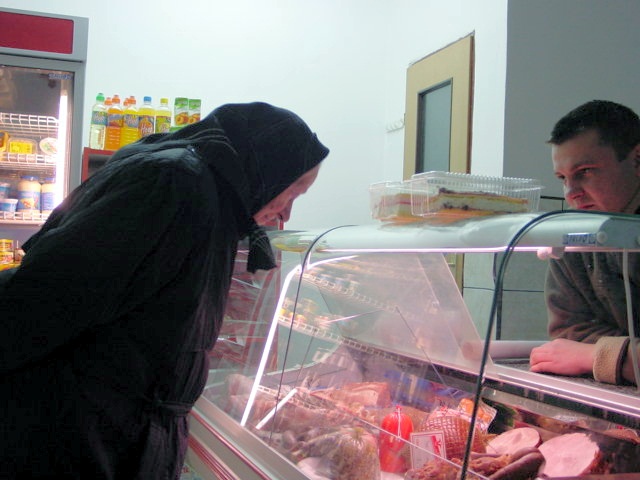Observation and inference — two totally different skills, so linked in some ways, so very different in most ways. To observe means to use one’s senses and only one’s senses. In observing, it’s what we see, what we smell, what we hear, what we taste, what we feel — and nothing else. To infer means to take those sensory stimuli and combine them then somehow go beyond them, drawing a logical conclusion based on evidence.
I don’t really recall any lessons in school about how to infer, about how to discern inferring from observing. Perhaps we had some lessons on those skills and differentiating between them, but I don’t really recall. (As if that’s any kind of proof…) Still, I teach my eighth grade students every year how the difference between inferring and observing, and one of the continuing ways I do it is to show a photograph with some statements below it, some inferences, some observations.
It might look something like this:
Are the following a) observations or b) inferences?
- He slipped.
- The floor is wet.
- There are papers on the floor.
- He is a lawyer.
- He was in a hurry.
- He is on the floor.
Students often insist that the first statement is clearly an observation. With a little prodding they realize, though, that they didn’t actually see the gentleman slip, so it’s only an inference.
“Why do you think that?” I ask.
“Because he’s on the floor, with his papers spread about in front of him, and the floor’s wet.”
“But how do you know the floor is wet?” I push further.
“Because there’s a sign about the floor being wet,” the students press incredulously.
I sketch a “Wet Floor” sign on a piece of paper and put it on the floor.
“Is this floor wet?”
“No!” comes the chorus.
“But how do you know? I mean, there’s a sign here and everything,” I continue. “Prove to me it’s not wet.” Finally one student gets up and touches the floor.
“See?” she says, showing me her dry hand, “It’s dry.”
Inferences that look like observations — how often do we confuse the two? How many disagreements do we have simply because one party thinks she’s observing and instead is inferring? I suspect most, if not all, political disagreement arises from this. One side feels it is only observing the simple facts while insisting that the other side is inferring — and inferring wrongly — from the facts, or worse, inferring based on previous inferences based on previous inferences, ad infinitum. In fact, probably most political positions are built on a long string of inferences. Understanding this might be a good first step to less acrimonious political discussions. Indeed, it might be a good first step to better relationships in general.

